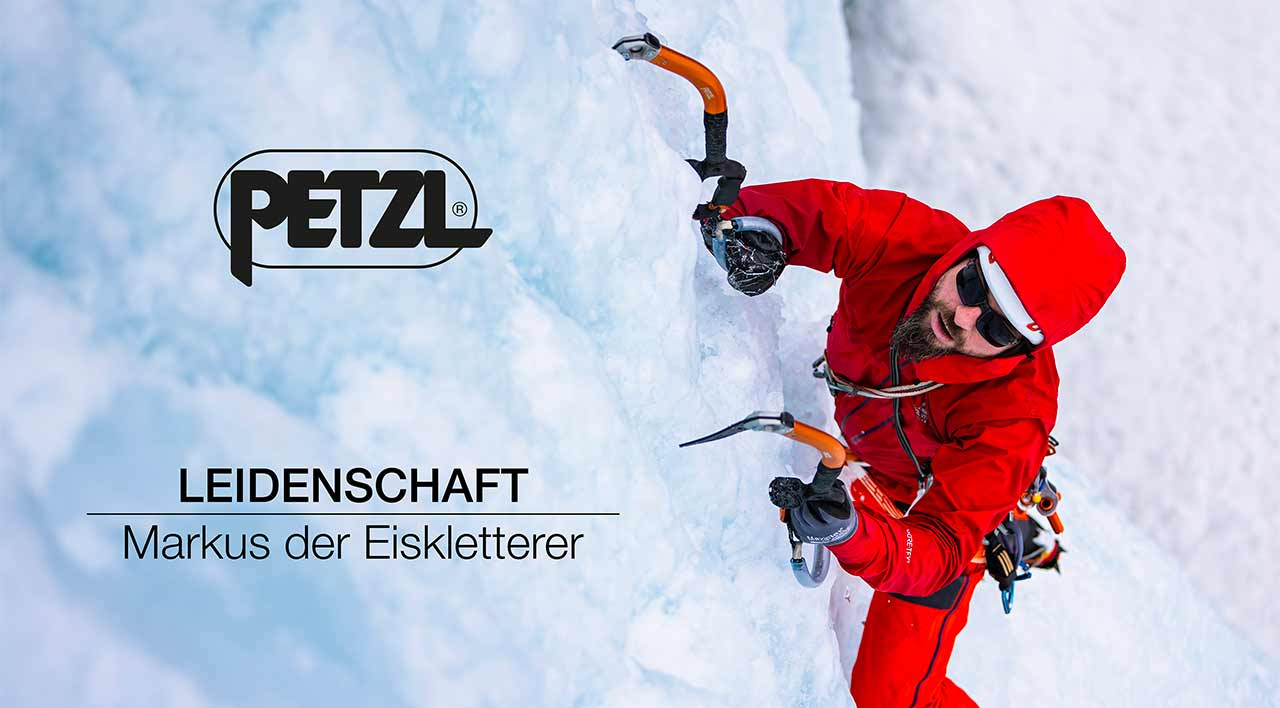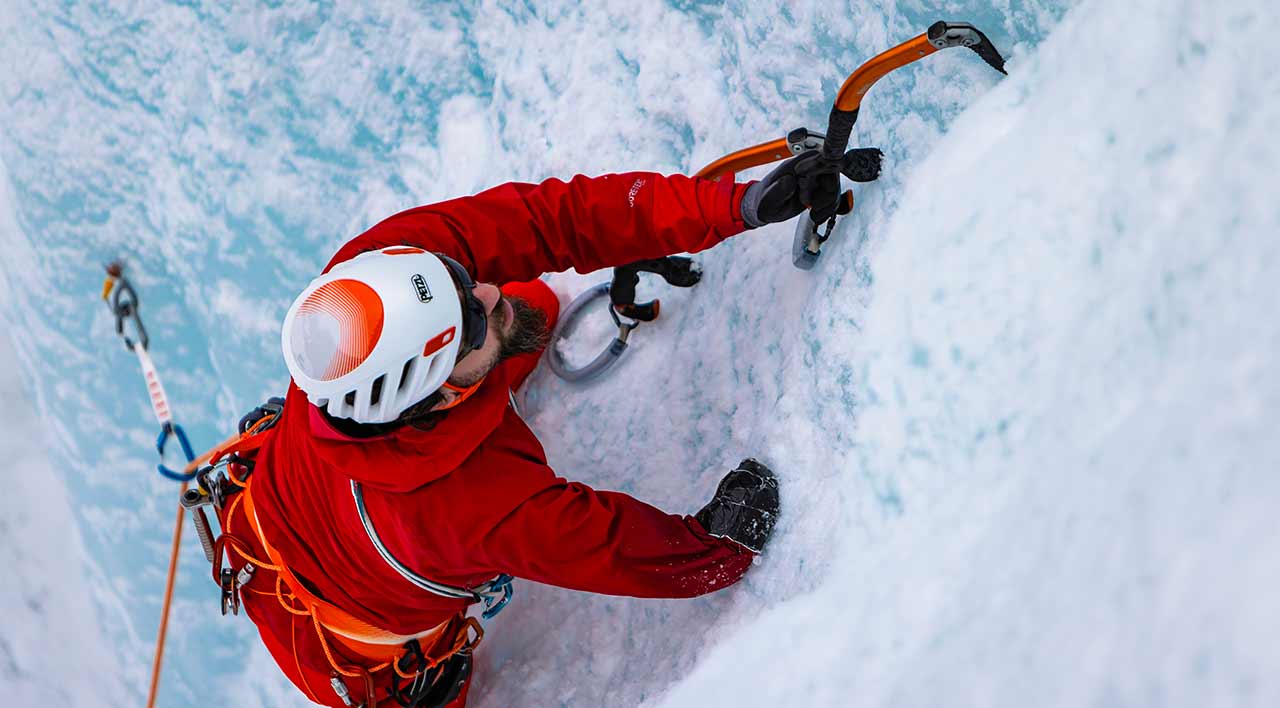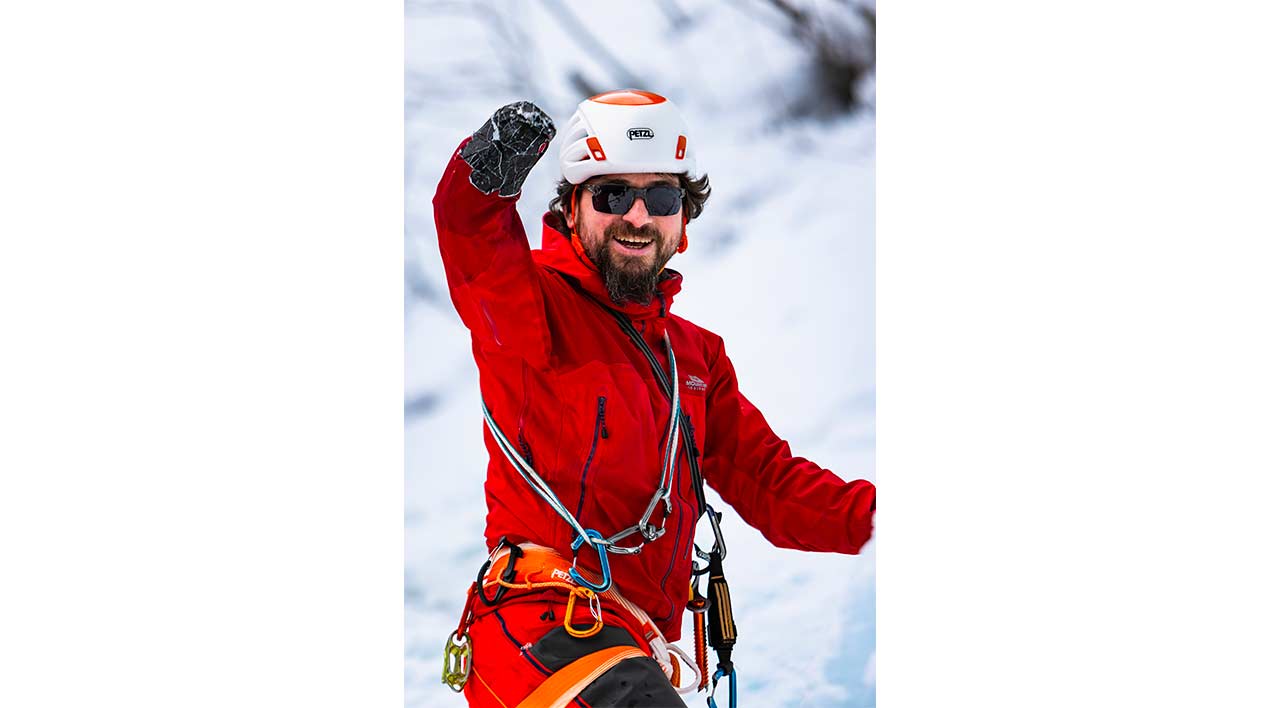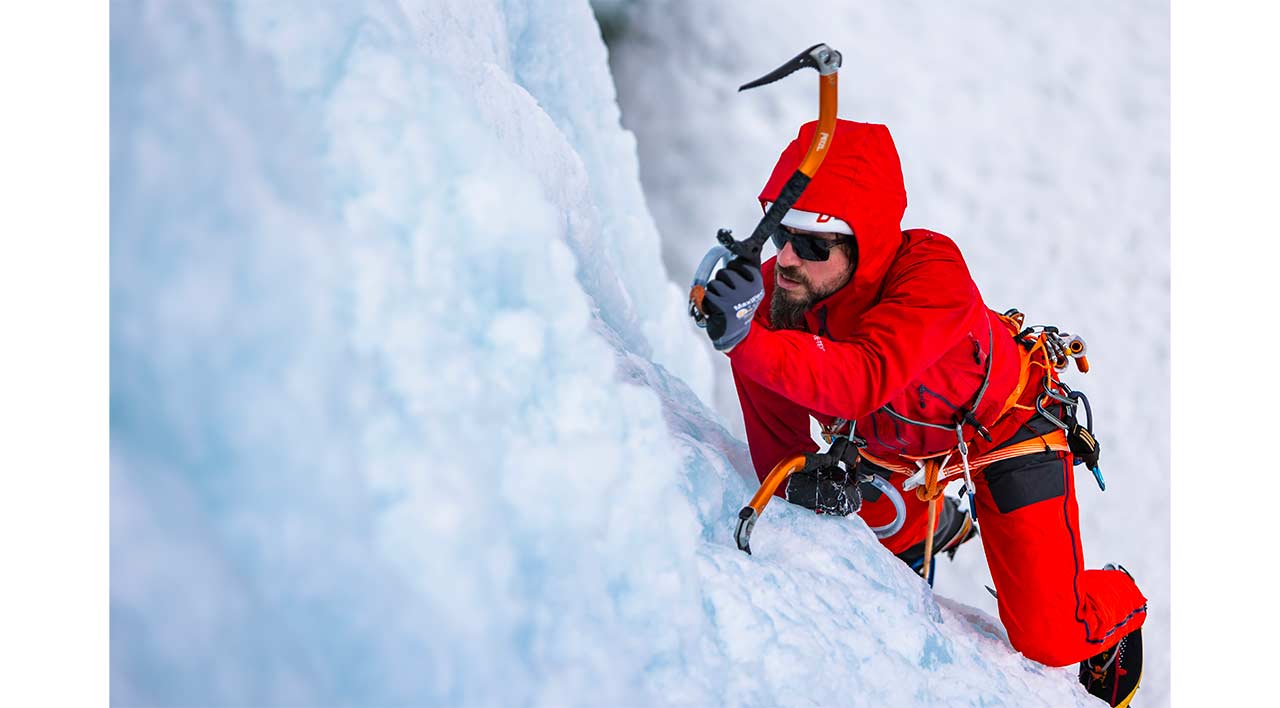

Interview with Markus Hofbauer for Petzl film project
"My name is Markus, I’m 43 years old. Eight years ago, I had a serious ice climbing accident. Since then, I’ve been severely limited physically — but I’m still an ice climber."
What exactly happened back then ?
"Exactly eight years ago yesterday, I was climbing with two friends. We had an accident — a 30-meter-high ice pillar collapsed. Our lead climber fell about 80 meters and sadly didn’t survive. I was belaying him and stood right in front of the pillar. A block of ice the size of a refrigerator hit me — with massive consequences: ten broken ribs, a shattered pelvis, a severe arm fracture, and many other injuries."
How did you use to deal with risk?
"Climbing — and especially ice climbing — is often seen by society as some kind of suicide mission. But it’s not. There are clear criteria for assessing icefalls, and of course, some things are riskier than others. Still, the risk is always there. If you’re in the wrong place at the wrong time, it can get you. I was never afraid of dying in the mountains. Dying is easy — it takes maybe two or three seconds. But surviving like I did — that’s the hard part. You spend the rest of your life dealing with what happened, with your body, and with how society treats you. In Austria, we’re looked after well enough — you can get by. But having a disability doesn’t just limit you; it also limits how others treat you. And that’s often much harder than the physical challenges themselves."

Have you been able to accept the accident?
"You don’t really have a choice. The limitations are tough. Sometimes I wish that just this or that thing would work a bit better. Everyone can see that I’m missing a hand — but the real problems are invisible. I had severe internal injuries, and ever since, my body can’t handle a lot of things anymore. Those are the parts no one sees, but they shape everyday life."
Why do you still go ice climbing?
"That’s a hard question. Honestly, it doesn’t make much sense. But I’ve put so much heart and soul into this sport. Ice climbing has always been the one thing I loved most. It’s full of technique — you protect yourself, you judge the ice, you make every call on your own. You’re always on the north side, in the coldest, harshest places — where no one really wants to be. But somehow, that’s exactly what I loved about it. Every day is different, every climb is new. It’s fascinating what water can create — those shapes, those textures. Ice and snow are magical to me. And “passion” comes from to suffer — and when you have an accident like mine, you see the other side of that passion. Nature can be incredibly beautiful, but also incredibly cruel — and sometimes it costs you dearly."
Do you want to show others that it’s still possible?
"No, that’s not why I do it. I do it for myself. The accident couldn’t kill my passion. I’m still fascinated by ice — by the material itself — and it still works for me. Rock climbing is hard with my injuries, but ice climbing actually works surprisingly well — especially with the new tool from Petzl. With it, I can climb again. I have limitations, yes — but far fewer than in other sports. That’s what keeps me going."

What’s special about the new Petzl ice tool?
"The main difference is the upper grip. It’s wider, so I can fit my stump into it perfectly. The rest of the handle is like a normal tool, but I’ve added a loop at the bottom so I can hold on when I’m not in the upper grip. Because of that bigger support, I can keep the tool stable — it’s much safer now. The old model’s upper grip was too small, which made it unstable. Now, even small hooks or tricky ice are possible again — things that would’ve been unthinkable before."
How did you get this new tool?
"Last year I saw a video of Maureen Beck — she also climbs with one arm. Petzl designed this tool for her. I thought, I need that too. Petzl was kind enough to build one for me and send it over."
How did it feel when you unpacked it?
"It was amazing. At first, I wasn’t sure if it would really work the way I imagined — but it worked even better. It was a huge step forward for me. I’m having fun again."

Is the accident still present in your mind?
"Every day. When I wake up, my foot hurts — something always does. In daily life, you get used to it somehow. But when I’m ice climbing, it’s different — the mental side comes back. You’re standing in the same kind of place where you almost died. Overcoming that takes effort. The first route is usually a mess, but once you get back into it, it becomes pure joy again."
Has your relationship with the mountains changed?
"Not really. I always knew what we were doing wasn’t without danger. The alpine accident statistics say it all. You can do everything right — and still be in the wrong place at the wrong time. There’s always an objective residual risk. You can teach people not to make stupid mistakes, but you can’t remove risk completely. And that’s what got me — plain and simple."
Is the anniversary of the accident special for you?
"Yeah, it still gets to me. I light a candle for Flo — that’s part of it. It’s hard, especially when you’re standing in front of the ice again. Sometimes I tell myself, just do the easy stuff and leave the rest. But that’s not who I am — that’s not how climbers are. The challenge is what defines us. If I stopped now, the accident might as well have killed me. I’m still alive — so I want to live. And for people with disabilities, it’s so important to get out, to do things, to feel like you’re still moving forward. That’s my drive: to get the most out of life, and not just waste away on the couch at home."